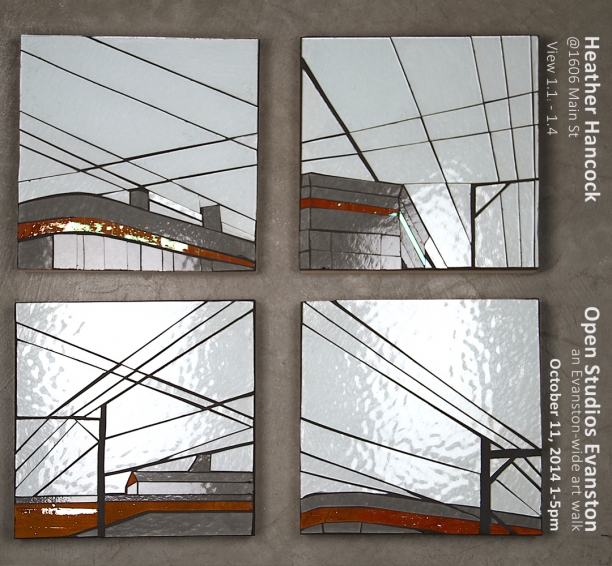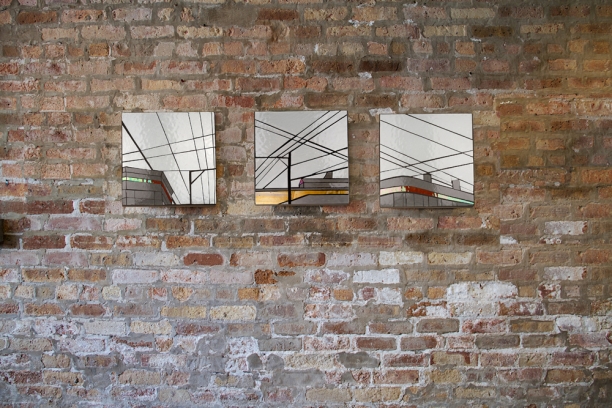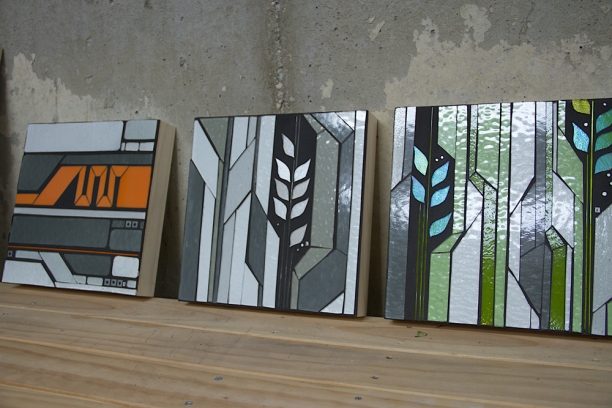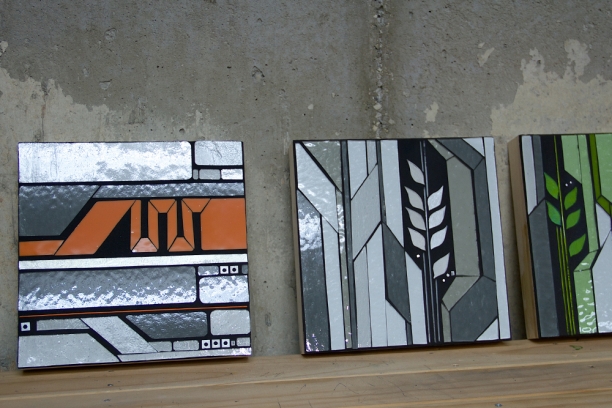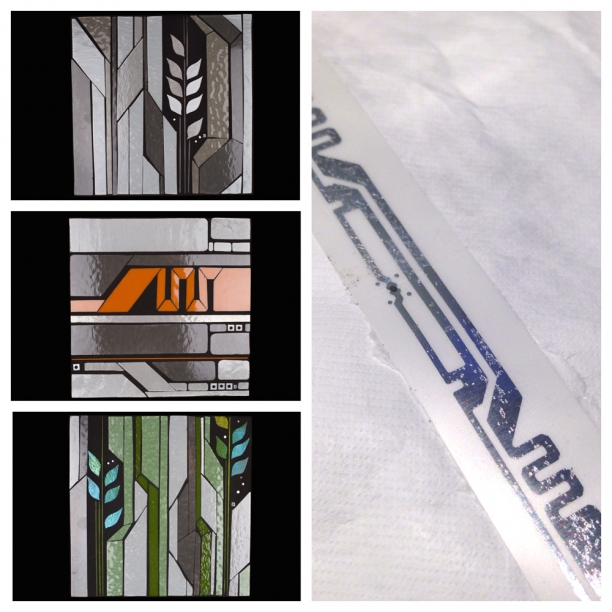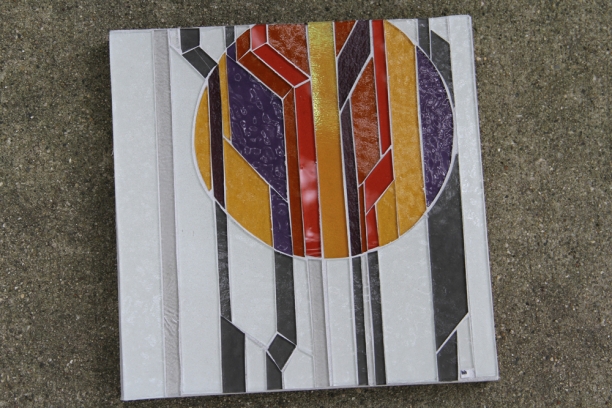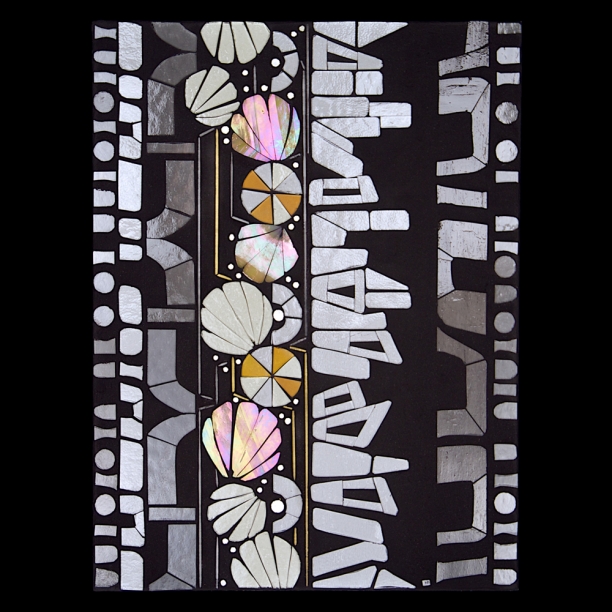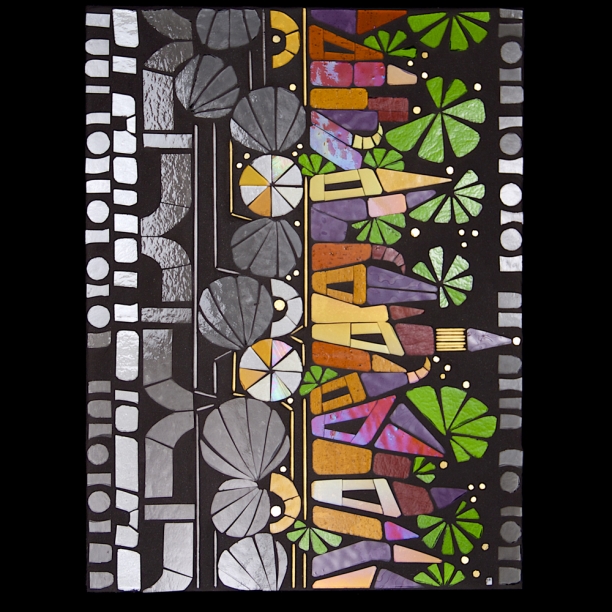I love a sleek, contemporary kitchen. My own kitchen features furniture-style pale gray laminate cabinets and drawers from German manufacturer Hofemeier, glossy gray Caesarstone and stainless steel. For us, the backsplash became an obvious space for a piece of functional art to bring visual interest and vibrancy to our otherwise neutral kitchen. Five mosaic insets with an animated abstract pattern vary the repetition of simple 1"x1" glass tile, bringing organic shapes and vibrant colors into the kitchen.
When it comes to a backsplash, there will be a designers and homeowners who want nothing but sleek, pristine surface. But there is another group looking to add some visual interest without compromising aesthetics in the central gathering space of any home. So can anything co-exist with sleek backsplash materials and custom cabinetry? Here are some renderings that range from an asymmetrically positioned small inset of cut glass through to a full-on celebration of light and color and form with abstracted botanicals.
Grow (aka "digital prairie") comes from my interest in finding the points of intersection between the built and natural worlds. A prairie wheat form is re-envisioned within graphic circuit-board inspired line elements. Staying with grayscale lets the piece blend with the neutral kitchen, shimmering to add subtle visual texture and interest. The inset is the same width as as upper cab to create a coherent transition point.
Here Grow is rendered in a grayscale with greens palette. Grays and greens are so crisp. A pop of color in a neutral kitchen creates an immediate focal point and visual feature without changing the sophisticated feel of the space.

Or how about creating a much bigger impact with a full backsplash installation? Using a full palette of shimmering layered green glass brings the natural world indoors. A composition of abstracted letter forms from art series Scan makes reference to the urban world and creates a graphic, contemporary installation.

Or, a composition of stylized botanicals mixed with text elements creates an urban bouquet of color and form. The crisp collage composition with strong linear elements is in keeping with the clean lines of the kitchen but brings some organic form and curve to vary the strong geometries of cabinets and countertops.This transforms a backsplash into a full feature art space that can tie together the surrounding palette or be rendered as a more textural piece in grayscale.

Get in touch. I'd love to hear about your project.
